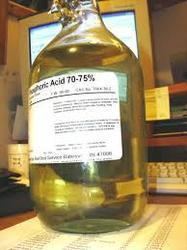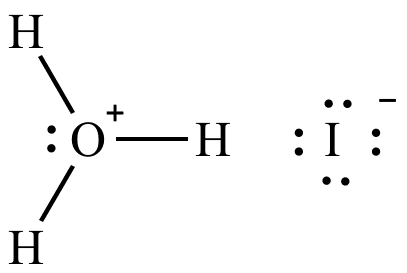Related compounds Density 1,700 g/cm³ | Formula HI Appearance colorless liquid | |
 | ||
Hydroiodic acid (or hydriodic acid) is a highly acidic aqueous solution of hydrogen iodide (HI) (concentrated solution usually 48 - 57% HI). It is the strongest hydrohalic acid. Hydroiodic acid is a commonly used chemical reagent and is one of the strong acids that ionize completely in an aqueous solution. Concentrated hydroiodic acid has a pH of less than 0.
Contents

Reactions
Hydroiodic acid readily reacts with oxygen in air, contributing to the deep colours associated with old samples;
4 HI + O2 → 2 H2O + 2 I2HI + I2 → HI3
Like other halogens, hydroiodic acid will perform addition reactions with unsaturated hydrocarbons such as alkenes.
Illicit uses

Hydroiodic acid is currently listed as a Federal DEA List I Chemical. Owing to its usefulness as a reducing agent, reduction with HI and red phosphorus has become the most popular method to produce methamphetamine in the United States. Clandestine chemists react pseudoephedrine (recovered from nasal decongestant pills) with hydroiodic acid and red phosphorus under heat. HI reacts with pseudoephedrine to form iodoephedrine, an intermediate which is reduced primarily to methamphetamine. This reaction is stereospecific, producing only (d)-methamphetamine.
Due to its listed status and closely monitored sales, clandestine chemists now use red phosphorus and iodine to generate hydroiodic acid in situ.
